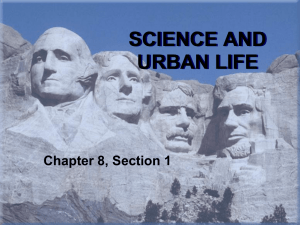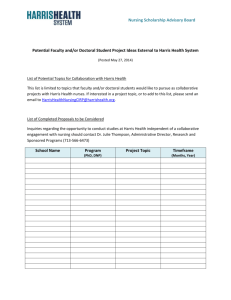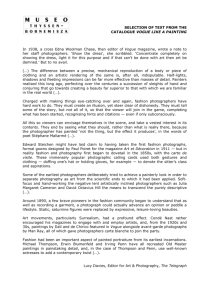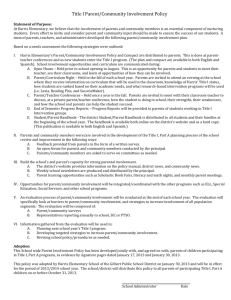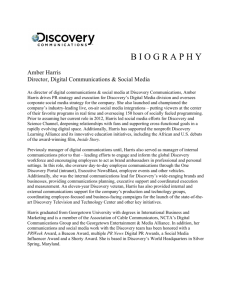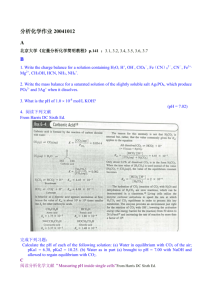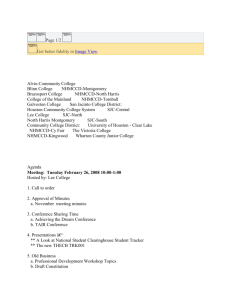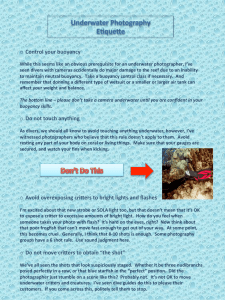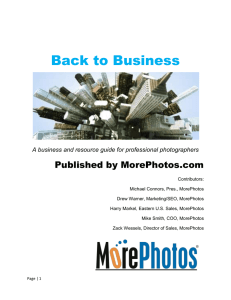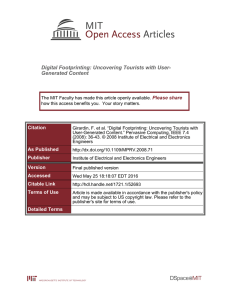37hw-Urban Life and Education
advertisement
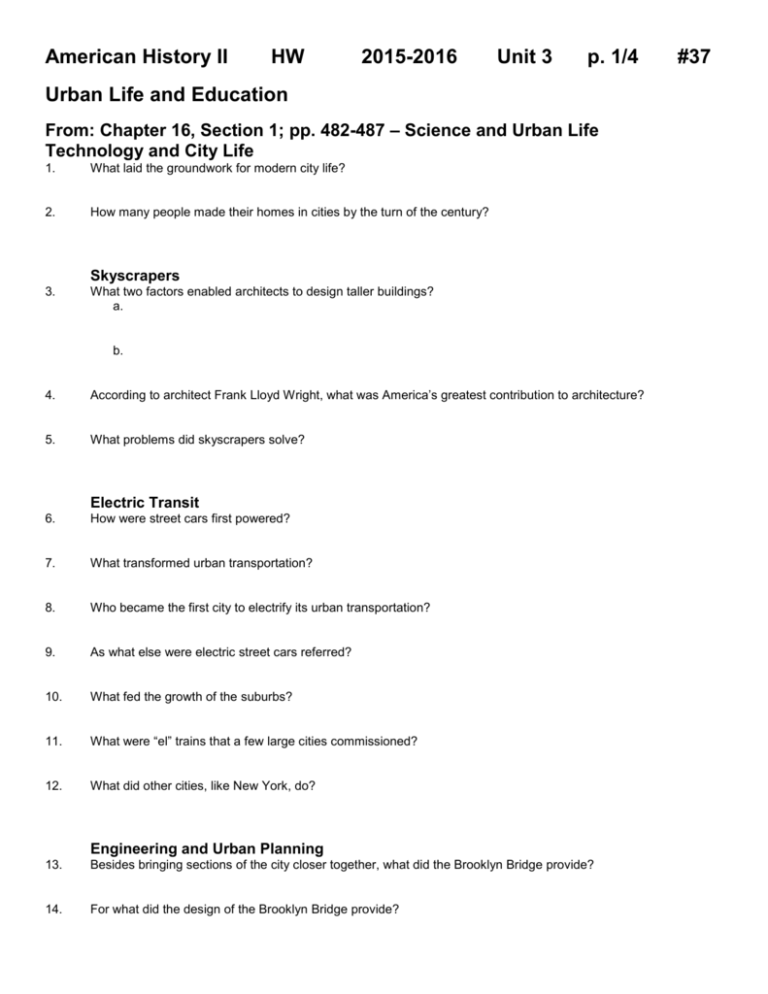
American History II HW 2015-2016 Unit 3 p. 1/4 Urban Life and Education From: Chapter 16, Section 1; pp. 482-487 – Science and Urban Life Technology and City Life 1. What laid the groundwork for modern city life? 2. How many people made their homes in cities by the turn of the century? Skyscrapers 3. What two factors enabled architects to design taller buildings? a. b. 4. According to architect Frank Lloyd Wright, what was America’s greatest contribution to architecture? 5. What problems did skyscrapers solve? Electric Transit 6. How were street cars first powered? 7. What transformed urban transportation? 8. Who became the first city to electrify its urban transportation? 9. As what else were electric street cars referred? 10. What fed the growth of the suburbs? 11. What were “el” trains that a few large cities commissioned? 12. What did other cities, like New York, do? Engineering and Urban Planning 13. Besides bringing sections of the city closer together, what did the Brooklyn Bridge provide? 14. For what did the design of the Brooklyn Bridge provide? #37 2015-2016 15. What inspired the science of urban planning? 16. What were city planners trying to restore? 17. Who spearheaded the movement for planned urban parks? 18. Olmstead helped design Greensward. What would this space become? 19. In what other cities did Olmstead design park space? Unit 3 City Planning 20. What problem did Chicago’s population growth present? 21. What did Daniel Burnham do with a swampy area near Lake Michigan? 22. What did Burnham leave Chicago that was even more important than the White City? New Technologies 23. Besides the railroad network, what else would speed the transfer of information? A Revolution in Printing 24. What was the literacy rate in the US by 1890? 25. As a result, what was increasing? 26. What was used to produce huge quantities of cheap paper? 27. What did faster production and lower cost make newspapers and magazines? 28. How much did some newspapers cost? Airplanes 29. With what did Orville and Wilbur Wright begin experimenting in the early 20th century? 30. What did they build first? p. 2/4 #37 2015-2016 Unit 3 p. 3/4 31. What did they commission? 32. When was their first successful flight? 33. With their first flight going 120 ft and lasting 12 seconds, how long did they begin flying within 2 years? 34. What had the US government established by 1920? #37 Photography Explosion 35. What was photography before 1880? 36. Why could photographers not take a picture of a moving object? 37. Who develop a series of alternatives to the heavy glass plates? 38. Instead of using heavy glass plates and carrying their darkrooms around with them, what did photographers do? 39. What did Eastman do when professional photographers were slow to use his new film? 40. When did Eastman introduce his new camera? 41. What did the purchase price of $25 include? 42. Once the pictures were taken, what did the consumer do next? 43. What did the ease of use prompt Americans to do? 44. What else did the new camera help create? From: Chapter 16, Section 2; p. 488-491 – Expanding Public Education One American’s Story 1. According to William Torrey Harris, what would public education be able to do? 2. Whose educational ideas were promoted by Harris? 3. What was Harris’ main belief about schools? 4. How did other reforms view schools? 2015-2016 5. Upon what did economic development depend? 6. To what was education the key? 7. How did others see public schools? 8. What did most people believe about public schools? Unit 3 p. 4/4 #37 Expanding Education 9. Why were many school aged children not receiving a formal education after the Civil War? Schools for Children 10. What did the state laws passed between 1865 and 1895 require? 11. What did the curriculum emphasize? 12. What drew criticism and made students miserable? 13. Outside of the public school system, what became increasingly popular? 14. How did educational opportunities between white and black children compare? 15. When would a public school education become widely available to a majority of black children in the South? The Growth of High Schools 16. As industrialism expanded, what did the economy demand? 17. What did many business leaders feel would be necessary to keep workers loyal to capitalism? 18. How many students were in high schools by early 1900? 19. How had the curriculum expanded? 20. What were the new vocational courses preparing the male students to do? 21. What were they doing for females?
